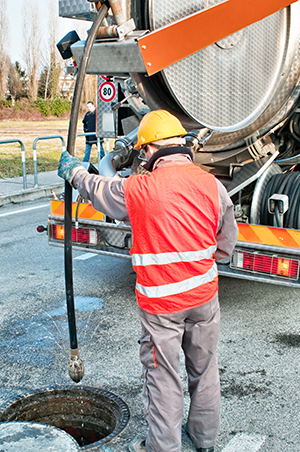
Whether you own or maintain an industrial facility or are in charge of maintaining a parking lot, precipitation provides both benefits and additional work. Given environmental concerns most owners of industrial facilities and parking lots would like to harvest rain water and snow melt off and ensure that it is diverted to places where it can be used to recharge ground water or add to streams, lakes, or rivers.
However, rain water and snow melt collected from parking lots and industrial facilities is not clean enough to be diverted directly to recharge wells and streams. This is because the water is likely to contain oils, free floating debris, and heavier debris.
A stormceptor is normally used to separate the oils, free floating debris, and heavier debris from the rain water to ensure that only pollutant free water enters stream and lakes. However, a stormceptor needs to be maintained by periodical inspection and cleanings.
Multiple Uses
Stormceptors are located at anyplace with a catch basin for storm water drains. For instance large residential and commercial buildings and communities, airports, automobile service stations, large parking lots such as those attached to shopping malls and department stores, and so on. All of these places generate either debris or oil spills that can mix with rain water or snow melt and enter fresh water sources unless the water from the catch basins is treated using a stormceptor.
Basic Role of a Stormceptor
A stormceptor collects rain water from storm water drains and the heavy debris is allowed to settle at the bottom as sediment while oils and floating debris are allowed to accumulate at the top. The pollutant free water is then discharged to recharge wells, streams, or lakes.
Typically, the stormceptor is linked to the catch basin and water from the catch basin is allowed to pass through the stormceptor before being discharged into fresh water systems. We at VacTone do this all the time we do it with a smile on our face.
Maintenance Requirement
While water from a stormceptor is discharged, the sediment and oils accumulate over time. After a few years this can make the stormceptor ineffective as debris and oils will also flow out along with the water that is being discharged. To avoid this, you need to get the stormceptor in your premises inspected periodically, preferably before heavy precipitation occurs.
VacTone has the capacity to inspect stormceptors and also use Vacuum trucks to clean stormceptors of sediments and oils when needed. By getting your stormceptor inspected and cleaned you will be able to prevent industrial oils and debris or vehicle oils and other debris found in parking lots from entering the fresh water systems, doing your bit for the environment.
The best way to clean a stormceptor which is often underground, is to use a vacuum pump that can pump out the oils and sediment for safe disposal away from fresh water sources or catchment areas.
Emergency Cleaning
While regular maintenance is the best way of ensuring that stormceptors function properly, sometimes emergency services are required. If you find that the water from the stormceptor is turbid, discolored, contains debris or oils, then you need to get the stormceptor cleaned as soon as possible.
For more information about cleaning and maintenance of stormceptors, give us call at VacTone now. We do not shirk from our responsibilities and our work ethic is supreme.
